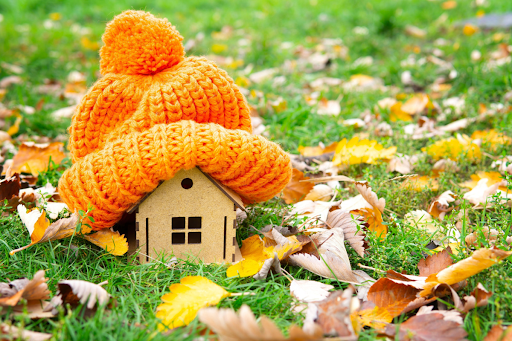Protecting Your Home From Old Man Winter
The Coop understands the importance of a warm and secure home during the winter months. As the chilly winds and first snowfall approach, it’s crucial to prepare your residence for the cold months ahead. Our dedicated team is here to be your reliable partner in winterizing your home effectively.
With our comprehensive winterizing a home checklist, you can rest assured that your house will remain warm, cozy, and energy-efficient, no matter how harsh the weather gets.
Our expert technicians at Cooper Mechanical have crafted this detailed guide to cover everything you need to know about winterizing your home. From putting away your outdoor furniture and turning off outdoor spigots to protecting water pipes along exterior walls and insulated window treatments, we’ve got you covered. We believe in proactive preparation to prevent potential issues, and our checklist is designed to help you achieve just that.
By sealing gaps to prevent air leaks around your windows and doors, scheduling professional heater maintenance, and cleaning your gutters, you can ensure your home is well-protected against the cold. Let us guide you through the essential steps to keep your house comfortable, energy-efficient, and free from winter-related hassles.
As your dedicated partner, Cooper Mechanical is committed to providing you with the best solutions to make your winter worry-free. Join us in creating a warm and inviting atmosphere in your home this winter season. Explore our winterization checklist and trust us to keep your house warm, cozy, and energy-efficient when the cold weather strikes.
Draining the Garden Hose and Turning Off Outdoor Spigots
Before the temperatures plummet, winterizing a home involves safeguarding your outdoor plumbing. Disconnect garden hoses and drain water from outdoor spigots to prevent freezing and potential damage to your pipes. Additionally, if you use a sprinkler system to water your lawn and garden, make sure it is thoroughly drained to prevent damage. Remember, small tasks now can save you from major repairs later.
Cleaning the Gutters
Proper drainage is essential to avoid ice buildup and potential damage to your home’s exterior. Clean your gutters thoroughly, removing leaves, debris, and other obstacles that might block the flow of water. By ensuring smooth water flow, you protect your house from water damage and ice formation.
Inspecting the Fireplace and Chimney
A warm fireplace can be a lifesaver during cold snaps, but it’s essential to inspect your fireplace and chimney before lighting that first fire. Clear any obstructions, check for creosote buildup, and ensure the damper is functioning correctly. A well-maintained fireplace not only keeps you warm but also ensures safety.
Weatherproof Windows and Doors
Sealing any gaps and cracks around your windows and doors is crucial to keep cold air out and warm air in. Invest in weatherstripping and caulk to prevent heat loss and save on energy bills. Proper insulation helps maintain a cozy atmosphere inside your home, even on the coldest days.
Inspect the Roof and Attic
A well-maintained roof and attic are vital components of winterizing your home. Inspect the roof for missing or damaged shingles, and repair them promptly. Additionally, check your attic insulation to prevent heat from escaping through the roof. Adequate insulation not only keeps your home warm but also helps you save on energy costs.
Insulating Water Pipes Along Exterior Walls
To prevent freezing, insulate water pipes located along exterior walls. When possible, apply pipe insulation to protect them from cold temperatures, ensuring a consistent water supply throughout winter. By taking this precaution, you avoid the inconvenience and potential damage caused by frozen pipes.
Scheduling Professional Heater Maintenance
Your heating system is your best friend during the winter months. Schedule professional seasonal maintenance with Cooper Mechanical to ensure your heating system is functioning properly. Our expert technicians specialize in heating repairs and service, guaranteeing your home stays comfortably warm all winter long.
Contact The Coop to Help Protect Your Home This Winter!
At Cooper Mechanical, we understand the importance of a well-prepared home during the cold season. Let us assist you in winterizing your home, from checking your thermostats to ensuring your heating system operates at its best.
Ready to make your home winter-ready? Contact us now for expert assistance in winterizing your home and keeping the cold at bay. Stay warm and comfortable all season long with Cooper Mechanical!
Commonly Asked Questions About Winterizing a Home
What Needs to Be Done to Winterize a House?
Winterizing your house is essential to protect it from the harsh cold weather. Start by inspecting windows and doors for air leaks and sealing any gaps with weatherstripping or caulk. Draining garden hoses and turning off outdoor spigots prevents freezing and potential pipe damage. Cleaning gutters ensures proper drainage, preventing ice buildup.
Insulate water pipes along exterior walls with pipe insulation to keep them from freezing. Inspect your roof and attic for insulation gaps, ensuring your home retains heat effectively. Don’t forget to schedule professional heater maintenance to guarantee your heating system works efficiently throughout the winter.
How Do I Winterize My Home Checklist?
Winterizing your home checklist involves several crucial steps. First, inspect your home’s exterior for cracks and gaps, sealing them with appropriate materials. Then, clean gutters and downspouts, removing leaves and debris to maintain proper drainage. Drain garden hoses and bring them inside for the winter. Then, be sure to drain your outdoor spigots to prevent freezing. Sometimes, with older models, the main turn-off valve for your outdoor spigot is located inside your house, usually in the basement or utility room. Turn it clockwise until it’s completely turned-off. Next, open the outdoor spigot and drain any remaining water that’s inside the pipe. Once the water drains out, shut-off the exterior spigot. Newer spigots are usually frost-free and only require one step. All you need to do is shut-off the spigot by turning the outdoor valve clockwise and you’re done. Either way, don’t forget this important task.
Insulate water pipes along exterior walls if you have access to the pipe. Seal windows and doors with weather stripping to prevent drafts, and inspect your roof and attic for insulation gaps.
Lastly, schedule professional heater maintenance and set your programmable thermostat to a consistent, energy-efficient temperature.
What Happens If a House Is Not Winterized?
Failure to winterize your house can lead to various issues. Frozen pipes are a common problem, causing pipes to burst and leading to costly water damage. Inadequate insulation and air leaks can result in heat loss, making your home uncomfortable and causing energy bills to skyrocket.
Additionally, ice dams can form on roofs, leading to roof damage and potential leaks. Without proper winterization, your house is vulnerable to these issues, compromising its structural integrity and your comfort.
How Do You Winterize Your House to Keep Pipes from Freezing?
To prevent pipes from freezing, start by insulating water pipes along exterior walls with pipe insulation. Drain garden hoses and turn off outdoor spigots before winter sets in. Inside, seal air leaks in your home, especially near pipes, with caulking or weather stripping.
Keep your home heated, even if you’re away, to maintain a consistent temperature. If you have pipes in unheated spaces, consider using a space heater to prevent freezing during extremely cold weather. Additionally, open cabinet doors under sinks to allow warm air to circulate around pipes located next to an exterior wall.
What Temperature Should I Winterize My House?
When winterizing your house, it’s crucial to maintain a consistent temperature to prevent freezing. If you’re away from home, keep your home heated to at least 55°F (13°C), to ensure pipes and other vulnerable areas stay warm. Setting your programmable thermostat to this minimum temperature helps prevent frozen pipes and ensures your home remains comfortable.
Regularly check the thermostat settings, especially during extreme cold snaps, to avoid any sudden drops in temperature that could lead to freezing issues. By maintaining a consistent indoor temperature, you safeguard your home against winter-related problems.






